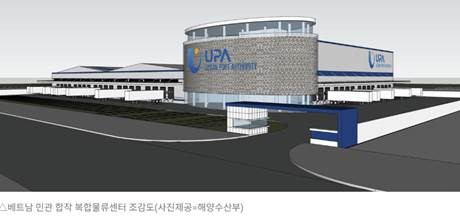旭辉空运国际 - 第23周24年航空业更新
航空货运 General
1) 韩国泰威航空正推动引进5架额外的A330neo飞机。

- 韩国廉价航空公司T'way Air计划再额外引进5架可飞往欧洲的长程飞机。这是因为在大韩航空和韩亚航空合并的过程中,大韩航空曾将部分飞机借给T'way Air使用,现在T'way Air需要寻找替代机型。T'way Air正在通过开拓长程航线来多元化收益来源,除已确定开通的欧洲和加拿大温哥华航线外,未来还计划拓展至美国西部地区。
- T'way Air计划于下月成立专项工作组,就引进空客A330neo型号的具体事宜,如座位数、机舱布局等,与制造商进行商议,并评估引进时间。目前计划于2026年5月之前,以租赁方式引进5架A330-900型号飞机
- 考虑到从大韩航空租用的飞机使用期限即将到期,T'way Air迫切需要确保长程机型的供给。此前大韩航空为帮助T'way Air开通欧洲4个航线(法兰克福、巴黎、罗马、巴塞罗那),还向其无偿提供了5架空客A330-200型飞机。其中1架飞机已完成涂装T'way Air标识,将于下月投入金浦-济州航线试运营后,投入欧洲航线。
-
除了合并问题,T'way Air正专注于拓展长程航线,希望成为"第二大型航空公司"。随着大韩航空与韩亚航空的合并,T'way Air正为成为替代航空公司做准备。其目标是到2027年将机队规模扩大至50架,其中以空客机型为主。
-
T'way Air于16日首次开通连接克罗地亚萨格勒布的欧洲航线,这是廉价航空公司中的首次。此后还计划陆续开通法国巴黎、意大利罗马、西班牙巴塞罗那、加拿大温哥华以及德国法兰克福等航线。
-
业内人士表示,开拓长程航线仍需进一步稳定,但T'way Air不仅计划开通欧洲和加拿大温哥华航线,还考虑未来拓展至美国西部地区,因此引进长程飞机是必要的。
2) "'下一个中国'是哪里?下一个物流争夺战的战场在哪里?"

- 越南、中东和印度尼西亚等物流企业正采取多种方式进行市场开拓
- "Next China"是指可能取代世界最大制造业国家中国的下一个国家。这是因为新冠疫情后中国经济大幅萎缩,加上中美矛盾加剧,导致"脱离中国"成为一种趋势,全世界都集中关注。
- 最近国内企业关注的Next China国家包括越南、印度和沙特阿拉伯等。为此,物流企业也陆续进入被视为Next China的国家,采取设立物流中心或合资公司等多种方式开展Next China战略
- 越南的劳动力成本低于中国,有人认为它未来可能取代中国成为最有前景的市场。因此,国内企业主要通过建立物流中心或与了解当地市场情况的合适合作伙伴成立合资公司等方式进军。
- 综合物流企业KCTC去年10月宣布,与海洋水产部和蔚山港务公社在越南东奈省联合建立一个复合物流中心。该中心占地21,000平方米,仓储面积12,000平方米,年处理量可达432万托盘(普通货物108万托盘,冷藏货物324万托盘)。
- 乐天环球物流也在越南胡志明市建立可同时处理普通货物和冷藏货物的物流中心,开始大举进军当地市场。今年5月,乐天环球物流与韩国海洋振兴公社在胡志明市乐天酒店(西贡)签署了提升全球物流供应链竞争力和船舶采购的合作协议。
- 韩国快递公司韩益快递选择与当地企业合资成立公司的方式进军越南物流市场。去年1月,韩益快递与越南集装箱运输企业Viconship签订成立合资公司VHL(Viconship-Han Express Logistics)的合同。
- CJ大韩通运去年1月与越南国有零售企业西贡合作社签署物流业务合作协议,计划共同运营在胡志明市西部建设的新物流中心,并探讨其他合作机会。
- 印度尼西亚和印度也正迅速崛起为新的机遇之地。印度尼西亚不仅是世界最大的煤炭出口国,而且在镍和钴等电动车电池关键原料的供给上分别位居世界第一和第二,备受关注。印度也有大量企业将生产基地转移至此,受到全球投资者的关注。近期,CJ大韩通运成为国内物流企业海外子公司中首家在当地证券交易所上市的,LX判图斯也与印度尼西亚企业成立合资公司,积极进军全球物流市场。"
3) 中国超低价直购激增推动航空运费持续高涨
- 香港歐洲運費一個月內上漲14%
- 航空貨運運費也在快速上漲。中國企業大量投放低價產品,導致全球需求增加。此外,缺乏海運資源的"緊急需求"也助長了航空貨運運費的上漲,預計未來將繼續大幅上漲。
- 航空業人士稱,截至4月底,香港至北美航線貨運運費(參考TAC指數)為每公斤5.54美元,較3月上升13.5%。與去年同期(5.2美元)相比上升6.5%,與2019年4月(3.6美元)相比上升了53.9%。香港至歐洲航線4月運費每公斤4.47美元,較前一個月上漲14%。春季通常是航空貨運淡季,兩位數上漲是非常罕見的。
- 航空業人士認為,這是由於尋找中國低價商品的需求增加所致。中國的在線購物平台為了"快速送達",大量使用航空運輸。中國企業把在國內銷售不完的產品以低價出售到海外,這種需求在全球範圍內大幅增加。通常,中國的航空貨運會經過韓國轉運到美國和歐洲。
- 據中國海關數據,今年1季度中國跨境電商進出口額為5776億元人民幣(約1.085萬億韓元),同比增長9.6%。業內擔心海運運費上升會推動航空運費也大幅上漲。航空業人士表示,旺季3、4季度海運貨源緊張的可能性增加,導致航空貨運諮詢量大增,"想在航空運費進一步上漲前鎖定貨運艙位和運費"。
- 通常航空貨運運費與上海集裝箱運價指數(SCFI)走勢一致。香港至北美航線運費去年底每公斤7.1美元,今年1月下降至5.22美元,2月進一步降至4.88美元,直到3月SCFI開始上漲,運費才開始上漲。
- 航空運輸比海運貴,主要用於運送體積小、重量輕但價值較高的電子產品,如智能手機、半導體等。為了趕間期,也會選擇緊急航空運輸。
4) 由于企业将生产重心从中国转移到东南亚,预计到2030年东南亚出口额将翻番

-
随着越来越多企业为了避开关税等贸易壁垒而转移生产基地或业务到海外,预计未来6年内东南亚经济体的对外出口额有望翻番。
-
这一预测基于企业将生产重心从中国转移到印度、越南、马来西亚、墨西哥等国的趋势分析。
-
该分析依据了对100家跨国企业的调查问卷以及对全球海外投资动向的分析。
-
在中美贸易紧张局势下,企业正寻求降低对中国的依赖,并分散供应链,以规避贸易壁垒和制裁风险。
-
最明显转移生产基地的行业包括汽车及零部件、电子产品、服装、玩具、资本货物、耐用消费品和半导体等。
-
其中,美国和日本企业主导了对印度的投资,而中国企业则集中在东南亚国家。
-
据此预测,越南的年出口额到2030年将翻倍超过7500亿美元,马来西亚年出口额将达6520亿美元。
-
但即便有这一趋势,中国仍将是多数中间产品的主要生产地,完全摆脱对中国的依赖仍将很困难。
5) 航空公司/GSA 活动更新
(1) 确定为最终收购人飞翔强原(4V),将以混合型航空公司的形式差异化
陷入企业重组程序的飞翔强原,其最终收购方已确定为威尼克斯。
时隔约1年重启运营。将转型为经营大型和小型飞机的混合型航空公司,旨在建立差异化的服务竞争力。
预计9月引入飞机并重新取得AOC,目标于第4季度开通阳阳-济州航线。
(2) 济州航空将于今年秋季开通至巴厘岛航线
济州航空将与印尼狮航合作,从今年10月底开始每天执飞仁川-巴厘岛航线。济州航空于4日与狮航集团签署了仁川-巴厘岛及巴淡航线的联营协议。
完成双方政府的航权许可后,将于即将到来的冬航季执飞每周7次的仁川-巴厘岛航线。
特别是,对于需求较大的巴厘岛航线,只要两国指定航空公司签署联营协议,就可不受航权限制无限制运营。
(3) 韩亚航空(TW)开通仁川-乌兰巴托航线
ICNUBN 4W(D1357) 1140/1410 A333,6/2开航
(4) 卡塔尔航空(QR)开通乌兹别克斯坦塔什干航线,每周4班直飞
DOHTAS 4W(D1357) QR377 1950/0120+1, TASDOH QR378 0320/0520 6/2开航

top



